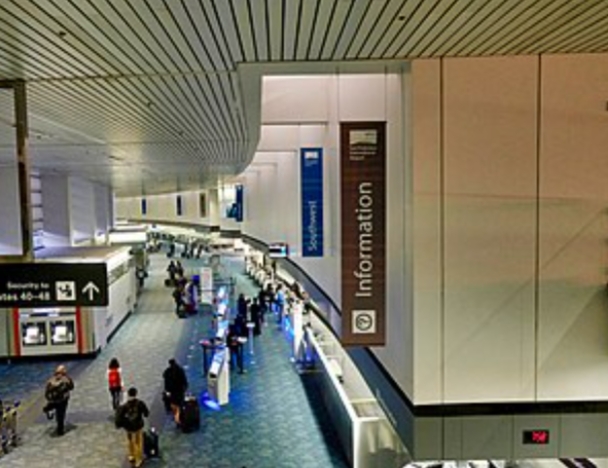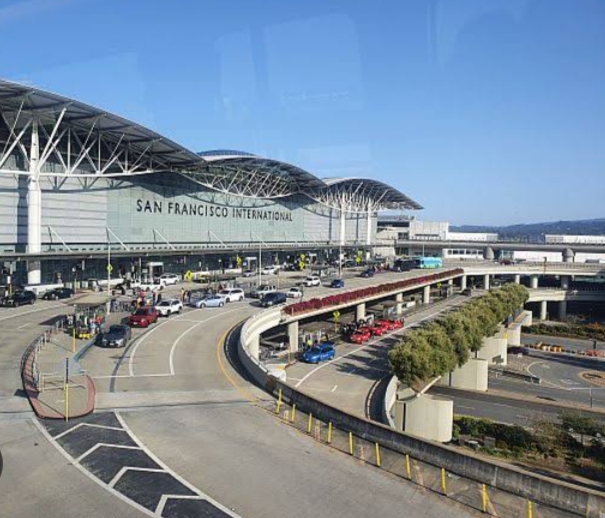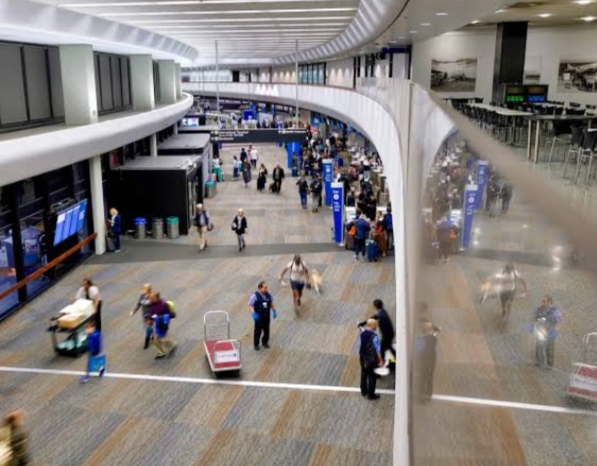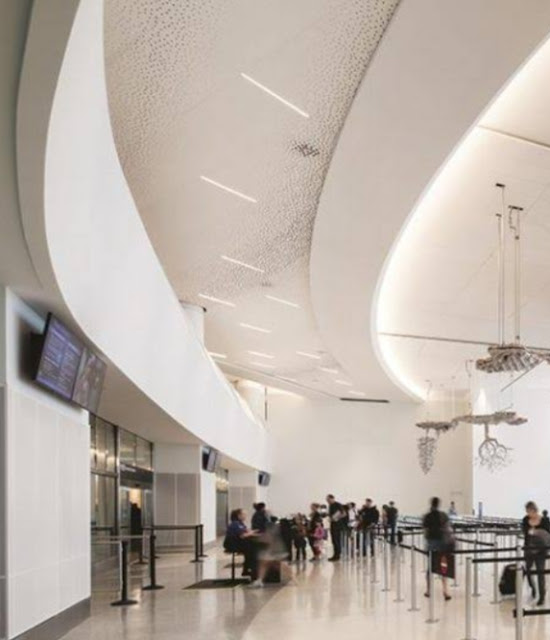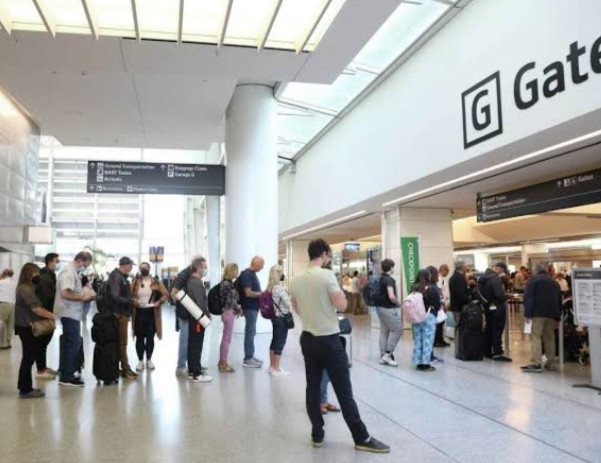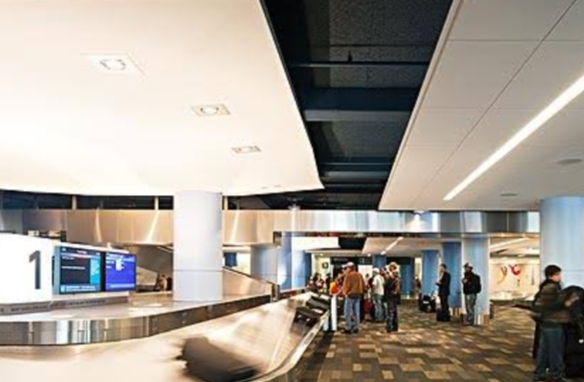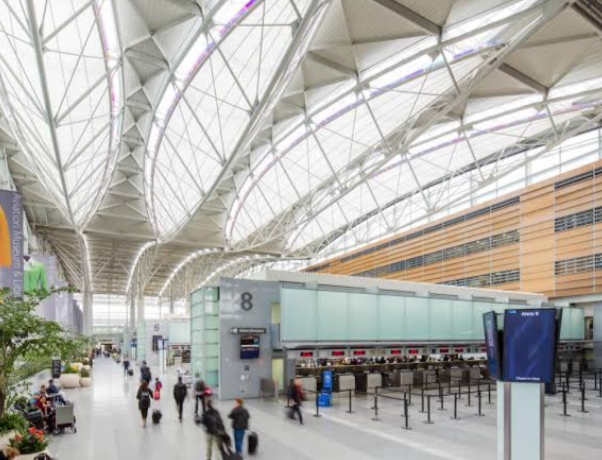Introduction Sustainability in San Francisco International Airport, USA
San Francisco International Airport (SFO) is committed to sustainability, implementing initiatives to reduce environmental impact.
From energy-efficient infrastructure to waste reduction programs, SFO aims to be a model for eco-friendly aviation practices. Through partnerships and innovative strategies, the airport strives to balance growth with environmental responsibility, contributing to a greener future for air travel.
Get to know San Francisco International Airport, USA
San Francisco International Airport (SFO) is a major hub located 13 miles south of downtown San Francisco, California. Handling over 50 million passengers annually, it ranks as one of the busiest airports in the United States. SFO serves as a gateway for both domestic and international flights, connecting travelers to various destinations worldwide.
Key features of SFO include state-of-the-art terminals, such as the iconic International Terminal, which reflects the region’s cultural diversity. The airport is renowned for its commitment to sustainability, with initiatives ranging from energy-efficient facilities to waste management programs.
SFO provides a wide array of amenities for travelers, including diverse dining options, shopping outlets, lounges, and art installations. Efficient ground transportation options, such as the Bay Area Rapid Transit (BART) and shuttle services, link the airport to the city and surrounding areas.
As a technology and innovation hub, SFO continues to adapt and enhance its services to meet the evolving needs of passengers, making it a crucial hub for both business and leisure travel on the West Coast.
San Francisco International Airport, USA Profiles Data
San Francisco International Airport (SFO) is a major international airport situated in San Mateo County, near San Bruno and Millbrae, 13 miles south of downtown San Francisco, California. Opened in 1927, SFO has grown into one of the busiest airports in the United States.
Key Features:
1. Passenger Traffic: SFO handles over 50 million passengers annually, serving as a crucial hub for domestic and international travel.
2. Terminals: The airport consists of multiple terminals, with the iconic International Terminal showcasing cultural diversity through art and design.
3. Sustainability: SFO is recognized for its commitment to sustainability, implementing various eco-friendly initiatives, such as energy-efficient buildings and waste reduction programs.
4. Amenities: Travelers at SFO enjoy a range of amenities, including diverse dining options, shopping outlets, lounges, and art installations.
5. Transportation: Efficient ground transportation options like BART (Bay Area Rapid Transit) and shuttles connect the airport to the city and surrounding areas.
6. Innovation Hub: Located in the tech-savvy San Francisco Bay Area, SFO continues to embrace technology and innovation to enhance passenger experience.
History of San Francisco International Airport, USA
San Francisco International Airport (SFO) has a rich history dating back to its opening in 1927.
Here are key points in its development:
1. Establishment: SFO was established as Mills Field Municipal Airport in 1927, named after the Mills Field Flying School of the early 1920s.
2. Expansion in the 1930s: The airport expanded during the 1930s, with new terminal buildings and runway developments.
3. Military Use during World War II: SFO played a crucial role during World War II as a major military airfield.
4. Post-War Growth: After the war, the airport returned to civilian use and experienced significant growth in the post-war era.
5. Name Change: In 1955, it was renamed San Francisco International Airport to reflect its growing international air traffic.
6. Jet Age and New Terminal: With the advent of jet travel in the 1960s, SFO built a new terminal to accommodate the increased demand for air travel.
7. Expansion and Modernization: Throughout the latter half of the 20th century and into the 21st century, SFO underwent multiple expansion and modernization projects to keep pace with the evolving aviation industry.
8. Innovation and Sustainability: SFO has become a leader in airport sustainability, implementing initiatives such as energy-efficient facilities and waste reduction programs.
9. International Terminal: The International Terminal, opened in 2000, is a notable architectural landmark that reflects the cultural diversity of the San Francisco Bay Area.
10. Current Status: Today, SFO continues to be a major international gateway, known for its commitment to sustainability, technological innovation, and providing a diverse range of services for millions of passengers each year.
Renewable Energy and Sustainability in San Francisco International Airport, USA
San Francisco International Airport (SFO) has been a pioneer in implementing renewable energy and sustainability initiatives, reflecting its commitment to environmental responsibility.
Key features include:
1. Solar Power: SFO has integrated solar power extensively, with solar panels installed on various facilities and structures. These solar installations contribute to the airport’s energy needs while reducing its carbon foounergy-Efficient Buildings:** The airport has focused on constructing and retrofitting buildings with energy-efficient technologies to optimize energy usage and decrease overall environmental impact.
3. Waste Reduction: SFO has implemented comprehensive waste reduction programs, including recycling initiatives and waste diversion strategies, to minimize the amount of waste sent to landfills.
4. Water Conservation: The airport has adopted water conservation measures, including efficient irrigation systems and water-saving technologies, to minimize water usage and promote responsible water management.
5. Green Building Practices: SFO incorporates green building practices in its infrastructure projects, emphasizing sustainability and environmentally friendly construction materials.
6. Alternative Transportation: The airport encourages the use of alternative transportation modes by providing efficient access to public transit, including the Bay Area Rapid Transit (BART) system, reducing the environmental impact of passenger travel to and from the airport.
7. Carbon Offset Programs: SFO may have carbon offset programs in place, allowing passengers and airlines to invest in projects that reduce or capture an equivalent amount of carbon emissions to offset their own environmental impact.
8. Partnerships and Certifications: Collaborations with environmental organizations and industry partnerships help SFO stay at the forefront of sustainability practices. Certifications such as LEED (Leadership in Energy and Environmental Design) may be pursued for new construction or major renovations.
Energy-Efficient Buildings Implementation in San Francisco International Airport, USA
San Francisco International Airport (SFO) has demonstrated a commitment to sustainability by implementing energy-efficient building practices.
Key aspects of this implementation include:
1. Technology Integration: SFO incorporates advanced technologies and design strategies in its buildings to enhance energy efficiency. This includes efficient lighting systems, HVAC (heating, ventilation, and air conditioning) solutions, and smart building management systems.
2. LEED Certification: SFO may pursue LEED (Leadership in Energy and Environmental Design) certification for its new constructions or major renovations. LEED certification signifies a high level of environmentally conscious building practices, covering energy efficiency, water conservation, and overall sustainability.
3. Green Design Principles: The airport likely follows green building principles in its construction projects, emphasizing sustainable materials, energy conservation, and environmentally responsible practices.
4. Renewable Energy Integration: In addition to energy-efficient measures, SFO may integrate renewable energy sources, such as solar panels, on or around its buildings to further reduce its environmental impact.
5. Collaboration and Partnerships: SFO may collaborate with energy experts, architects, and sustainability consultants to implement cutting-edge practices in energy-efficient building design.
6. Continuous Improvement: The airport is likely committed to continuous improvement in energy efficiency, regularly evaluating and updating its buildings to align with the latest advancements in green building technology.
Green Design Principles in San Francisco International Airport, USA
San Francisco International Airport (SFO) incorporates green design principles in its infrastructure projects, emphasizing sustainable and environmentally responsible practices.
Key elements of green design at SFO include:
1. Energy Efficiency: Buildings and facilities at SFO are likely designed to maximize energy efficiency, utilizing technologies such as energy-efficient lighting, HVAC systems, and insulation to minimize energy consumption.
2. Renewable Energy Integration: Green design principles may involve the integration of renewable energy sources, such as solar panels, to generate clean and sustainable power for the airport’s operations.
3. Water Conservation: SFO likely incorporates water-efficient technologies and practices, such as low-flow fixtures and efficient irrigation systems, to minimize water usage and promote responsible water management.
4. Sustainable Materials: The airport likely prioritizes the use of environmentally friendly and sustainable materials in construction and renovation projects, minimizing the environmental impact of its infrastructure.
5. Waste Reduction and Recycling: Green design involves strategies to reduce waste generation and promote recycling. SFO likely implements waste reduction programs, diverting materials away from landfills.
6. Natural Lighting and Ventilation: Design principles may emphasize the incorporation of natural lighting and ventilation to reduce the need for artificial lighting and air conditioning, contributing to energy savings.
7. Landscaping for Sustainability: Landscaping practices at SFO may follow sustainable principles, including the use of native plants, efficient irrigation, and green spaces that enhance the overall environmental impact of the airport.
8. LEED Certification: SFO may pursue LEED (Leadership in Energy and Environmental Design) certification for its buildings, which sets standards for environmentally sustainable construction.
These principles collectively contribute to SFO’s commitment to sustainability and align with broader efforts to minimize the airport’s ecological footprint.
Sustainability Certifications for San Francisco International Airport, USA
San Francisco International Airport (SFO) has been proactive in obtaining sustainability certifications that demonstrate its commitment to environmental responsibility.
Some relevant certifications may include:
1. LEED Certification: SFO may pursue LEED (Leadership in Energy and Environmental Design) certification for its buildings and infrastructure projects. LEED is a widely recognized green building certification that considers factors such as energy efficiency, water conservation, and sustainable materials.
2. Airport Carbon Accreditation: This program, initiated by Airports Council International (ACI), assesses and recognizes airports’ efforts to manage and reduce their carbon emissions. SFO might participate in this accreditation to showcase its commitment to carbon reduction.
3. ISO 14001 Certification: ISO 14001 is an international standard for environmental management systems. It involves a systematic approach to environmental management and could indicate SFO’s commitment to minimizing its environmental impact.
4. Green Business Certification: SFO may pursue local or regional green business certifications, demonstrating adherence to environmentally friendly practices in its day-to-day operations.
5. Sustainability Reports: While not a certification, SFO may regularly publish sustainability reports outlining its environmental initiatives, achievements, and goals. These reports provide transparency and accountability in the airport’s sustainability efforts.
Carbon Offset Programs in San Francisco International Airport, USA
San Francisco International Airport (SFO) may offer carbon offset programs as part of its sustainability initiatives. Carbon offset programs allow travelers to compensate for their flight-related carbon emissions by investing in projects that reduce or capture an equivalent amount of carbon elsewhere.
Key points related to carbon offset programs at SFO may include:
1. Voluntary Participation: SFO’s carbon offset program is likely voluntary, giving passengers the option to participate in mitigating the environmental impact of their air travel.
2. Project Types: The airport may collaborate with environmental organizations to support a variety of carbon offset projects. These projects could include renewable energy initiatives, reforestation efforts, or methane capture programs.
3. Financial Contributions: Travelers interested in offsetting their carbon footprint may make financial contributions at designated points within the airport or through online platforms. The funds are then directed towards verified carbon reduction projects.
4. Awareness Campaigns: SFO may run awareness campaigns to inform passengers about the carbon offset program, emphasizing the importance of sustainable travel practices.
5. Tracking and Reporting: The airport may track and report on the success and impact of its carbon offset program, ensuring transparency and accountability in environmental initiatives.
Renewable Energy Integration in San Francisco International Airport, USA
San Francisco International Airport (SFO) has demonstrated a commitment to renewable energy integration as part of its sustainability initiatives.
Key aspects include:
1. Solar Power Installations: SFO has implemented solar power systems across various facilities, including parking structures and terminal buildings. These solar installations contribute to the generation of clean and renewable energy.
2. Energy-Efficient Technologies: The airport incorporates advanced energy-efficient technologies in its infrastructure to optimize energy consumption. This includes efficient lighting, HVAC systems, and other technologies designed to reduce overall energy demand.
3. Renewable Energy Procurement: SFO may engage in renewable energy procurement agreements, sourcing a portion of its energy from renewable sources such as wind or solar farms. This helps reduce reliance on traditional energy sources and lowers the carbon footprint of the airport’s operations.
4. Partnerships with Renewable Energy Providers: Collaborations with renewable energy providers and initiatives may play a role in sourcing and integrating renewable energy into the airport’s energy portfolio.
5. Innovative Projects: SFO may explore innovative projects to harness renewable energy, potentially utilizing its infrastructure for energy generation while maintaining functionality and safety standards.
6. Carbon Reduction Goals: Renewable energy integration aligns with SFO’s broader sustainability goals, contributing to efforts to reduce carbon emissions and environmental impact.
Commercial Activity in San Francisco International Airport, USA
San Francisco International Airport (SFO) is a major hub with a vibrant commercial environment offering a range of services and amenities for travelers.
Key aspects of commercial activity at SFO include:
1. Diverse Retail Outlets: SFO features a variety of retail options, including duty-free shops, luxury boutiques, and souvenir stores. Travelers can find a wide range of products, from electronics to clothing and local specialties.
2. Dining Options: The airport offers diverse dining choices, including restaurants, cafes, and fast-food outlets. Passengers can enjoy a mix of international cuisine and local flavors while waiting for their flights.
3. Lounge Services: SFO provides lounges for various airlines and premium passengers, offering amenities such as comfortable seating, Wi-Fi, refreshments, and business services.
4. Rental Car Services: Travelers have access to rental car services, allowing for convenient transportation upon arrival at their destination.
5. Airport Hotels: SFO may have on-site hotels or nearby accommodations, providing convenience for passengers with layovers or early departures.
6. Transportation Services: Commercial activities extend to transportation services, including taxis, rideshare services, shuttles, and public transit options, facilitating easy connectivity to and from the aaaiu
7. Business and Conference Facilities: SFO may offer business and conference facilities, providing spaces for meetings, conferences, and other business-related activities.
8. Art Installations: The airport’s commercial environment often includes art installations and exhibitions, showcasing local and international artists and contributing to the cultural atmosphere of the airport.
These commercial activities collectively enhance the overall travel experience for passengers at San Francisco International Airport, making it a dynamic and well-equipped hub.
Conclusion for Exploring Sustainability in San Francisco International Airport
San Francisco International Airport (SFO) stands as a notable exemplar of sustainability in the aviation industry.
Through a comprehensive approach, SFO has implemented various initiatives to minimize its environmental impact and promote responsible practices. From renewable energy integration, energy-efficient buildings, and waste reduction programs to the commitment to green design principles, the airport is dedicated to balancing growth with environmental responsibility.
SFO’s emphasis on sustainability extends beyond infrastructure to include commercial activities, with diverse retail, dining, and service offerings designed to enhance the traveler experience. The airport’s commitment to renewable energy, coupled with its support for carbon offset programs, reflects a holistic approach to environmental stewardship.
As a vital transportation hub in the San Francisco Bay Area, SFO not only connects people worldwide but also serves as a model for how airports can embrace sustainability without compromising operational efficiency. Continued innovation and collaboration with environmental organizations position SFO as a leader in the pursuit of a greener and more sustainable future for air travel.
https://www.exaputra.com/2023/11/exploring-sustainability-in-san.html
Renewable Energy
New Jersey’s Electricity Rate Crisis Is A Perfect Storm for Wind Energy
Weather Guard Lightning Tech

New Jersey’s Electricity Rate Crisis Is A Perfect Storm for Wind Energy
New Jersey ratepayers received an unwelcome surprise in June 2024 when electricity rates jumped between 17 and 20 percent virtually overnight. But behind the dramatic increase is a much larger story about the challenges facing renewable energy deployment, grid modernization, and the future of power generation across the PJM Interconnection region—one that has significant implications for the wind energy industry.
According to Kyle Mason, Associate Planner at the Regional Plan Association, the rate spike stems from record high prices in PJM’s annual capacity auction, which secures power for peak grid loads. PJM operates the grid for New Jersey and 12 other states, covering over 60 million people. The capacity market’s unprecedented pricing “trickled down to increased electricity rates for New Jersey rate payers,” Mason explained.
Old Grid, New Demands
“We have a very old grid, and we’re trying to update it in real time,” said RPA’s Robert Freudenberg – while bringing more energy onto the system. “It’s like trying to build the plane while you’re flying it.”
Freudenberg, Vice President of the Energy & Environment Program at RPA, described the crisis as a convergence of multiple factors: the grid’s age presents challenges, the interconnection process has slowed dramatically, and demand is skyrocketing.
The interconnection queue process, which once took a few years, now stretches across many years. According to Mason, as of April of last year, over 200 gigawatts of projects sat waiting for study in the interconnection queue, with approximately 98 percent comprising solar, wind (both onshore and offshore), and storage. Even if only half of those projects eventually come online, Mason noted, “it would markedly improve the rate situation.”
Unprecedented Demand Growth
The energy demand situation is compounded by explosive load growth, driven largely by artificial intelligence and data centers. Mason noted that current projections show load growth reaching five percent annually—levels, he said, “we have not seen…since air conditionings were invented.”
These aren’t small facilities. “The industry is seeing massive, massive expansion of data centers,” Mason said. “Not just small data centers that we saw expand during the years leading up to the dot-com bubble, but rather these massive hundred-plus megawatt data centers,” primarily concentrated in Northern Virginia, New Jersey, Pennsylvania, and Ohio.
By 2030, data centers alone could account for 10 to 12 percent of electricity demand on the PJM grid—a staggering figure that underscores the urgency of bringing new generation capacity online quickly.
Offshore Wind “Ideal Solution” for Energy Island
New Jersey, the most densely populated state in the country, uses more energy than it produces. Thanks to that distinction and its geographic constraints, it’s referred to as an “energy island”- where wind represents an ideal solution for large scale generation.
The state had plans for approximately five gigawatts of offshore wind capacity, including the 1,100-megawatt Ocean Wind project, which has since been abandoned. Federal policy shifts have further complicated the landscape, effectively putting offshore wind development on ice across the region.
Freudenberg pointed to the South Fork Wind farm off Long Island as proof of concept.
“If you look at the data from that, [South Fork] is performing very well. It’s reliable,” he said, noting it put a thousand people to work and stabilized rates for customers.
Grid Reliability Challenges
Adding another layer of complexity, PJM recently implemented stricter reliability rules that dramatically reduced the amount of generation qualifying as reliable.
“The buffer dropped from about 16 gigawatts of supposedly reliable energy sources to about 500 megawatts when the reliability requirements were issued,” Weather Guard Lightning Tech CEO and Uptime Podcast host Allen Hall notes in the interview.
“Many fossil fuel plants face reliability concerns during extreme weather events, extreme cold events,” Mason explained. That made the older plants ineligible to enter PJM’s capacity market under the new rules. That caveat simultaneously removes baseload capacity while renewable projects remain stuck in the interconnection queue.
Is PJM’s Progress Too Little, Too Late?
PJM has made some progress addressing interconnection challenges. Working with the Federal Energy Regulatory Commission, the grid operator implemented a new cluster study process that prioritizes projects on a “first ready to serve basis” rather than first-come, first-serve. Mason reported they’ve already studied over 40 gigawatts of energy, “and that’s starting to get built,” Mason said.
“But there’s the question of whether that can outpace the rising demand,” he said.
On transmission infrastructure—a critical bottleneck for wind energy—the average timeline to build high voltage transmission lines stretches to 10 years. Mason noted projects face “years and years just to get the materials to build power plants, and then 10 years with permitting costs and supply chain issues and permitting timelines to build the transmission wires.”
Policy Recommendations: States to Lead the Way
Despite federal headwinds, Freudenberg urged states to maintain momentum on offshore wind.
“States need to keep the charge on for offshore wind. They need to keep the fire burning for it,” he said, recommending that states prepare transmission infrastructure and work with developers so projects can move forward quickly when federal policy shifts.
New Jersey has taken some positive steps, recently announcing its Garden State Energy Storage Program that targets over two gigawatts of storage capacity and releasing grid modernization standards for utilities.
Of course, when utilities are required to modernize, rate payers usually foot (most of) the bill. Still, having an available, reliable energy supply is the first order of business.
For wind energy operators and stakeholders, the New Jersey situation illustrates both the critical need for renewable generation and the complex policy, infrastructure, and market challenges that must be navigated to deliver it.
As Freudenberg summarized: “The ingredients here are so good for offshore wind. Everything… the proximity, the wind speeds. All we have to do is build those things and connect them into our grid and we’ve got a lot of power.”
The question is whether policy will allow that to happen before the grid crisis deepens further. We’ll be watching closely!
Listen to the full interview with Allen Hall, Joel Saxum, Kyle Mason and Robert Freudenberg here and subscribe to Uptime Tech News, our free weekly newsletter, today!
Image: PJM https://www.pjm.com/-/media/DotCom/about-pjm/pjm-zones.pdf
https://weatherguardwind.com/could-wind-energy-reduce-new-jersey-electricity-rates/
Renewable Energy
Chopin — Music that Inspires
 There’s a story behind the piece below, Chopin’s “Heroic” Polonaise, performed by Vladimir Horowitz, the pianist most people deem to be the world’s top interpreter of Chopin.
There’s a story behind the piece below, Chopin’s “Heroic” Polonaise, performed by Vladimir Horowitz, the pianist most people deem to be the world’s top interpreter of Chopin.
Frederic Chopin was born in 1810 near Warsaw, Poland, and was known as a child prodigy as a pianist and composer by the time he was six or seven.
Russia had long ruled Poland, but in the 1820s, Russian rule grew more arbitrary, and secret societies were formed by Polish intellectuals in several cities to plot an insurrection. In November 1830, Polish troops in Warsaw rose in revolt.
Chopin moved to Paris shortly after his 22nd birthday, where he would spend the rest of his life composing, teaching, and concertizing, but his love for his native land remained fierce.
But what could he do? Chopin was a small and sickly person, barely five feet tall, perhaps 90 pounds in weight. He certainly couldn’t be a physical part of an uprising, but he could inspire his native Poles with his compositions.
There are a few good examples of his works along these lines, but the Heroic polonaise stands by itself. When I hear it, a single word comes to fore: bravery.
Enjoy, and don’t be embarrassed if you have goosebumps.
Renewable Energy
Doing What’s “Right” Is More Controversial than it Seems
 Some of us are looking for a single, simple statement to encapsulate what is going so wrong in America today, and perhaps it relates to what Aristotle says at left here.
Some of us are looking for a single, simple statement to encapsulate what is going so wrong in America today, and perhaps it relates to what Aristotle says at left here.
Even the MAGA folks think that what they’re doing is “right.” By this I mean white supremacy, mass deportation of immigrants (with or without due process), the rejection of science, and so forth.
-
Climate Change2 years ago
Spanish-language misinformation on renewable energy spreads online, report shows
-
Climate Change Videos2 years ago
The toxic gas flares fuelling Nigeria’s climate change – BBC News
-
Climate Change2 months ago
Guest post: Why China is still building new coal – and when it might stop
-

 Greenhouse Gases1 year ago
Greenhouse Gases1 year ago嘉宾来稿:满足中国增长的用电需求 光伏加储能“比新建煤电更实惠”
-

 Climate Change1 year ago
Climate Change1 year ago嘉宾来稿:满足中国增长的用电需求 光伏加储能“比新建煤电更实惠”
-
Greenhouse Gases2 months ago
Guest post: Why China is still building new coal – and when it might stop
-

 Carbon Footprint1 year ago
Carbon Footprint1 year agoUS SEC’s Climate Disclosure Rules Spur Renewed Interest in Carbon Credits
-
Renewable Energy3 months ago
US Grid Strain, Possible Allete Sale



